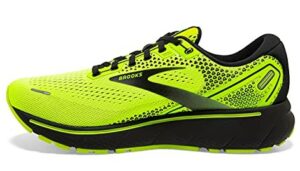All good run training plans feature active recovery days and, importantly, a recovery run. No one needs to run hard all the time and the body needs time to absorb the impact of your high-intensity training days, while getting ready for your next harder session. While speed workouts, hill repeats, and long days out are all great fun, the recovery run is also a key part of your training program.

Many runners make the mistake of not taking any days off or thinking that every run needs to be done at a fast pace. Blowing your heart rate through the roof every day is not the answer, however. Even those signed up for running streaks do a 1-mile easy day once a week (if they’re looking after their body and recovering correctly). So, what are recovery runs?
What is considered a recovery run?
A recovery run is an easy run where you focus on moving with very little effort. This means keeping your heart rate below a certain threshold (if using a heart rate monitor) or your rate of perceived exertion (RPE) very easy. It’s not about speed – you want to run at a conversational pace, feeling very relaxed and comfortable.
The key to a good recovery run is that there’s very little impact on your muscles and joints if done right. These slower paces let your muscles repair and keep blood flowing through the body, allowing oxygen and nutrients to be delivered to your muscles. After intense workouts, this helps with recovery.

Moreover, by running easy, you’re putting less strain on your joints than during harder workouts. This keeps the miles ticking away against your training plan, maintaining your aerobic fitness, without adding pressure to your ankles and knees.
What are good recovery runs?
To get the full benefit, the pace of recovery runs needs to be low and relaxed. It’s really important that this is not another hard effort. Additionally, depending on your goal race, you should aim for a short run of no more than 5 miles or 40 minutes long.
If you are training for a marathon, for example, your recovery runs can be 30-40 minutes long at a relaxed pace. If you run on roads, this could see you covering 2 to 4 miles – yes, that slow!
A good recovery run strategy is to head to the trails. Running on softer ground is great for taking pressure off the joints and it’s also a good way to vary your stimuli during the week. You could either run in the park or on a local walking trail. Be careful to use trail running shoes, or some road shoes you don’t mind getting dirty.
Finally, when doing a recovery run, try to ensure your route doesn’t include hills. Running uphill, even keeping a slow pace, will hike up your heart rate and interfere with the recovery process. Even downhill running can be hard on your joints, especially if going too fast. Either pick a relatively flat route or walk up the hills and take it easy on the descents.
What is a good recovery run pace?
So, let’s talk about pace. Yes, it needs to be easy and relaxed, but you may find it difficult to know exactly how to pace yourself if you don’t have a lot of experience.
As a rule of thumb, look at your 3-mile pace: how long does it usually take you to run a 5k race? During recovery, aim for 50-75% of that pace. This depends on your fitness levels and relative pace to effort. For a 30-minute 3-mile runner, i.e. someone who runs 10-minute miles at their max, a good recovery pace is a 15-minute mile.
You can set your watch to 4 miles/hour speed and try to keep to that. Sometimes you’ll be going faster, especially if you are descending on your route. However, you can make up for that by walking every now and then.
A run/walk is good for recovery, as well. Beginner runners can try to run for 3 minutes, then walk for 1 minute, and repeat this 10 times for a 40-minute session. This keeps your heart rate low and your average pace slow and relaxed. At the same time, a faster runner (let’s say a 20-minute 5k finisher) will find a 6 mile/hour speed pretty easy. It’s all relative to your previous training and abilities!
What is the recovery pace for elite runners?
Hardcore runners have a tendency to compare their pace to that of the elites. This is not a great idea, since every runner has their own “sweet spot” effort level and pace. However, they’re great to learn from when it comes to recovery days: 4-minute mile runners slow down to more than 8 minutes per mile to really get the benefit of true recovery.

Another interesting feature of some elites’ recovery routines is that they often do double sessions. For example, Haile Gebrselassie, one of the most successful runners of all time and double Olympic Gold medalist, would add a 50-minute recovery run after fartlek running earlier in the day.
Keeping the legs moving and accumulating weekly mileage with several sessions and double days kept him in shape and actually reduced his recovery time after hard efforts.
Interestingly, Gebrselassie’s recovery pace was 6:42 / mile – just showing you the range of pace between amateur and elite runners.
How slow is too slow for a recovery run?
Although you need to go easy, you should still make a slight effort during your recovery runs. Aim for 50-75% of your 5k race pace so that you’re still getting some aerobic benefits and continuing to build endurance and time on feet.
The benefit of recovery runs is that they build your cardiovascular fitness, without stressing the body too much. They’re also a good time to practice good running form. But, to make the most out of these sessions, you can’t just walk (although a run/walk combo is perfectly fine and can be beneficial for beginners, or after really tough training weeks).
Ensure you’re keeping a comfortable pace and that you feel some cardio effort, but as little as possible strain on the legs.
What is the difference between an easy run and a recovery run?
Both easy runs and recovery runs aim to develop your cardiovascular fitness, without putting too much stress on your muscles. When you do a recovery run, you’re typically following a harder workout earlier that day or the day before. It’s an opportunity to stimulate blood flow into the muscles, helping them recover quicker. When you do an easy run, this can just be adding miles to your weekly tally or even a long run where you keep effort easy to go longer.
Easy runs refer to easy sessions that are not specific speed workouts. The latter can include interval or fartlek training, hill sprints, tempo runs, or hill repeats (longer efforts than hill sprints). So, you could have an easy 40-minute run on a Monday, followed by interval workouts on a Tuesday, hill sprints on a Thursday, and a long run on the weekend.
You’re simply building time on your feet, increasing mileage, and continuing to develop your cardio fitness.
Recovery runs is a term used to identify those easy runs that are built into your plan specifically for recovery from an effort. This can be an afternoon 30-minute recovery run after a morning speed workout on the track. Or it could be a 60-minute very easy run the day after a hard hill sprint session.
Think of it more like a focus for the mind: while, during an easy run, you’re keeping the pace comfortable but focusing on building mileage, on a recovery run, you may even go slower and just focus on muscle recovery.
Ultimately, advanced runners do double training days where the evening run is a designated recovery run in contrast to the harder morning workout. For most runners, however, the terms can be used interchangeably.
Bottom line
In conclusion, your recovery workouts are a key part of your training program. Taking recovery runs seriously ensures you steer clear of injury, add weekly mileage without too much stress on your body, and stimulate muscle recovery and blood flow throughout the body. They should be a great way to keep you running for longer, alongside runner recovery tools and cross-training.
Keep checking Runtrails.org for more tips and advice on how to be a healthy, successful runner. We’re tackling the best way to do easy runs and how to include them in your training plan next, so make sure not to miss that!


























